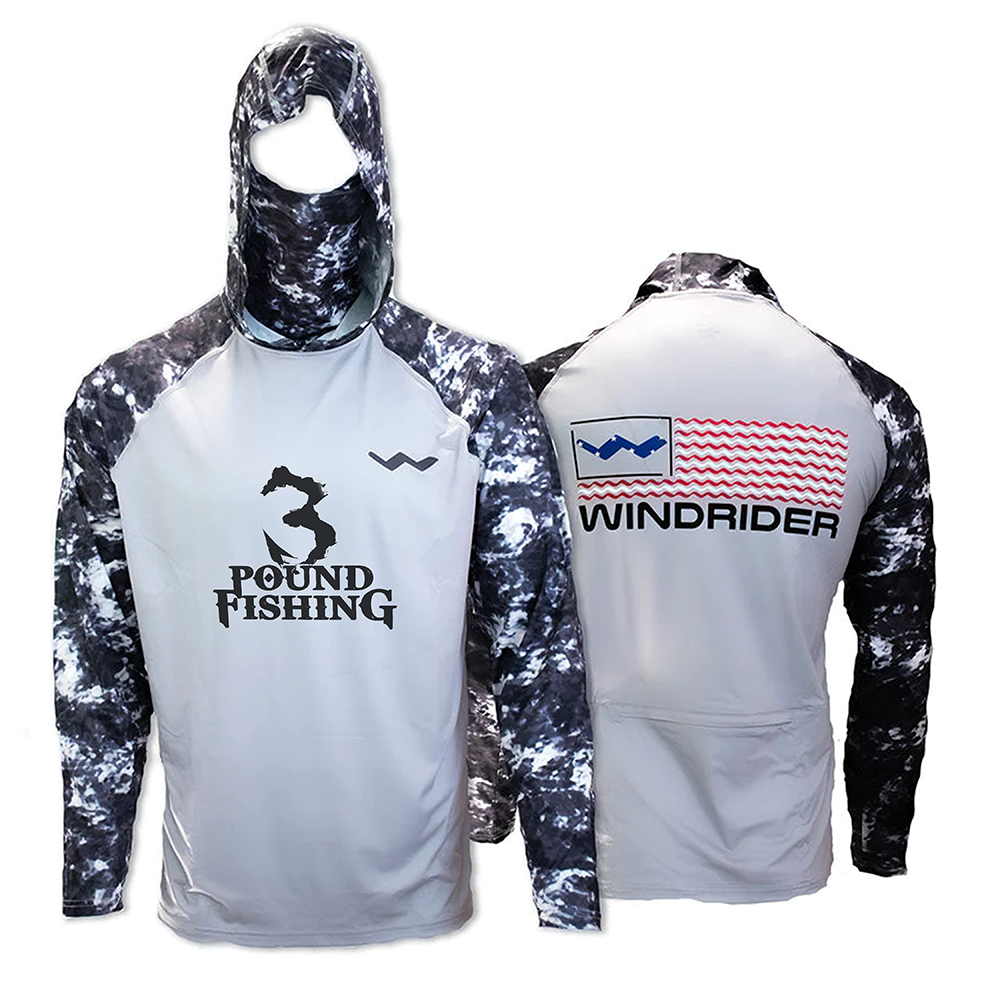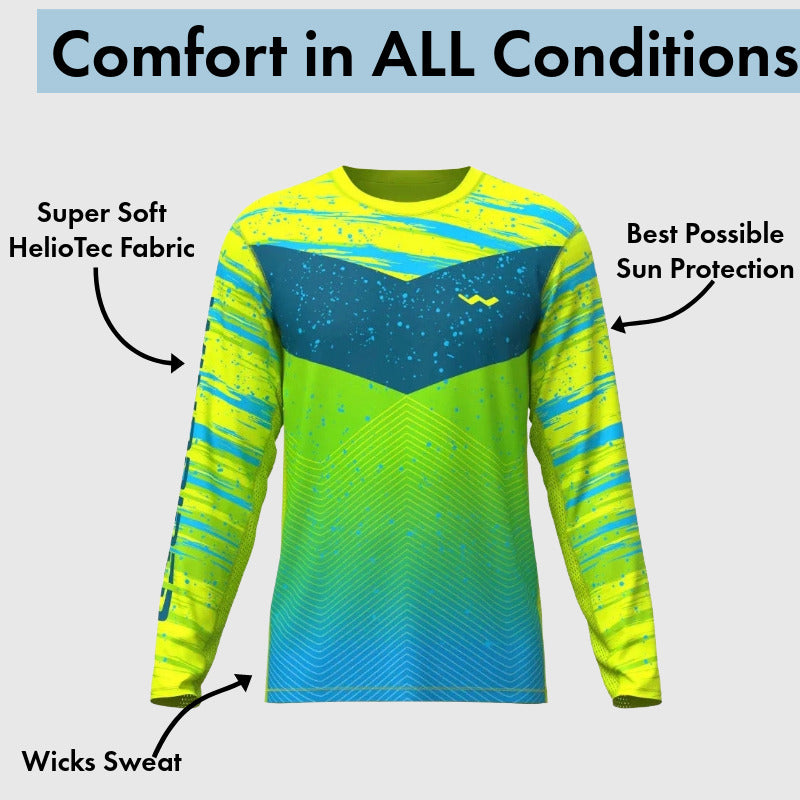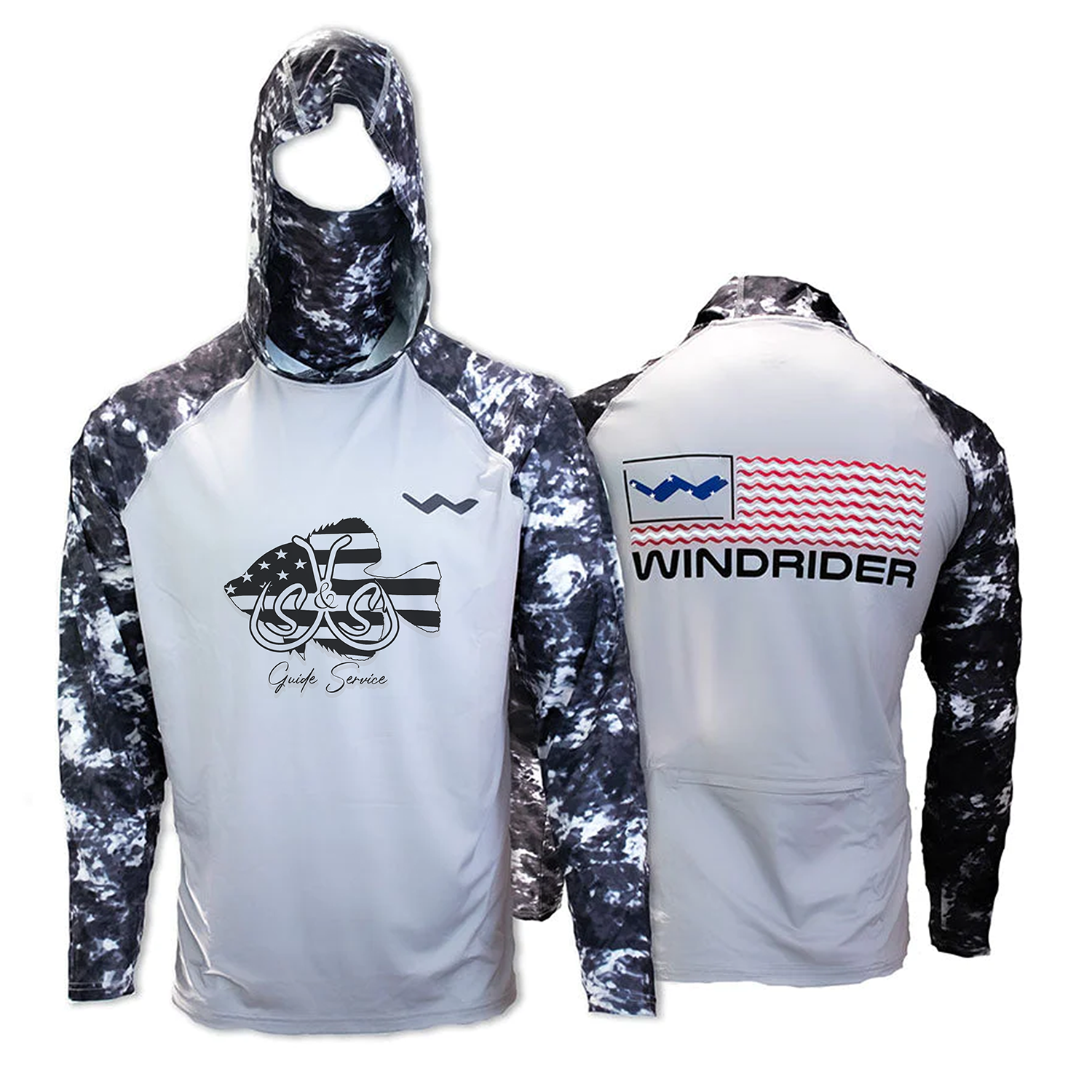Why Inshore Fishing Environments Destroy Regular Clothing
Shallow water settings amplify sun exposure through light reflection. When the bottom consists of sand and water depth measures only 6-18 inches, it behaves like a mirror, sending UV rays back upward to strike your face, neck, and arms from multiple directions. Research published in the Journal of Photochemistry and Photobiology shows that water surfaces can reflect up to 25% of UV radiation, meaning your total exposure can increase by a quarter beyond what direct sunlight alone would deliver.
Professional guides who spend 200-300 days annually on the water under these conditions report that cotton t-shirts disintegrate within weeks. Salt crystals that settle on fabric degrade fibers, sun deteriorates the material, and constant assault from spray, rain, and perspiration keeps it perpetually damp, accelerating decay. More concerning, a soaked cotton shirt offers virtually no UV protection and can remain wet for 45-60 minutes, leaving the wearer drenched, sticky, and decidedly uncomfortable.
Technical fabrics in performance fishing shirts address these challenges with engineered polyester-nylon blends that maintain UPF 50+ protection even when saturated, shed moisture rapidly via capillary action, and resist salt degradation for the long term.
Why the Helios Excels at Sight Casting

Sight casting for cruising fish in shallow water demands freedom of motion. When a 30-inch redfish appears 60 feet away, you have approximately 8-12 seconds to deliver an accurate presentation. Even slight restrictions in your casting swing can transform that opportunity into a miss.
The Helios Long Sleeve Sun Shirt features an athletic silhouette that delivers 3-4 extra inches of fabric across shoulders and chest, a clear departure from tighter, form-fitting styles. That additional material proves essential during the backcast phase when the arm extends behind the body. Guides report that restrictive shirts force shortened casting strokes, reducing both accuracy and distance by 15-20%.
Fabric weight becomes critical when temperatures climb. Helios, weighing 3.5 oz per square yard, supplies necessary durability and longevity while avoiding the oppressive heat-trapping of heavier 5-6 oz alternatives. When you're poling a skiff for three hours in 92°F with 80% humidity, those extra ounces per yard translate into a surprisingly noticeable difference in comfort.
Thumb holes serve a practical purpose beyond design aesthetics. When casting overhead, sleeves tend to slide up forearms, exposing a 4-6 inch strip of skin directly to sun. Over an 8-hour fishing day, that modest patch can absorb enough UV radiation to cause painful burns. By anchoring fabric in thumb holes, sleeves stay locked in place, maintaining coverage even after hundreds of casting cycles.
Choosing the Optimal Color for Flats Fishing

Color selection affects both comfort and fishing success. Light shades reflect sunlight rather than absorbing it, keeping you appreciably cooler. Thermal imaging data shows that white or light-gray shirts can stay 8-12°F cooler on the surface than navy or black shirts when exposed to direct sun.
Stealth matters on the flats. In shallow water, even cautious fish can detect movement and subtle color shifts from surprising distances. Many guides prefer light-blue or gray shades that blend with sky and water, reducing their profile while positioned on a poling platform. The Helios collection offers multiple hues that balance heat reflection with low visibility.
While neon yellows or oranges certainly enhance safety visibility, they can also spook wary fish. Reserve those high-visibility shades for trolling or situations when you need other boats to spot you clearly.
Durability Requirements for Backcountry Use
Backcountry fishing trips are proving grounds for any apparel. Twisted mangrove limbs grab at sleeves, abrasive oyster bed edges tear through fibers, and omnipresent salt spray relentlessly corrodes anything not built to last. Seasoned guides demand shirts that can endure well over 100 days on the water each season without succumbing to wear.
Helios construction relies on flat-lock seams that sit flush against skin, preventing chafing even during marathon days while delivering strength that surpasses ordinary stitching. By distributing load across a wider swath of fabric, these seams reduce the risk of seam failure at high-stress zones such as shoulders and underarms.
Abrasion resistance shifts from nice-to-have to necessity when threading narrow mangrove tunnels or slipping beneath tangled overgrowth en route to remote fishing holes. The polyester blend that composes UPF 50+ fishing shirts delivers exceptional abrasion resistance, preserving fabric integrity even after countless brushes against rough surfaces.
Browse our browse our rain gear for more options.
Managing Moisture in Tropical Climates
Inshore fishing rarely allows you to stay dry. You might be waist-deep in surf, caught in an unexpected rain squall, or simply drenched in sweat under a sweltering tropical sky. A quality fishing shirt must master moisture-wicking to maintain comfort when elements soak you.
Helios fabric draws sweat away from skin via capillary action, transporting it to the outer surface where it vaporizes rapidly. In lab tests at 85°F with 70% humidity, the garment completely dried in approximately 12-15 minutes after being soaked. That speedy drying helps prevent the clammy sensation you experience when stepping back into an air-conditioned boat cabin or encountering an afternoon breeze.
Moisture-wicking doesn't just keep you dry; it also moderates body temperature through evaporative cooling. When sweat spreads over the shirt's outer layer and vaporizes, it draws thermal energy away from your body, creating a cooling effect that can make temperature feel roughly 5-8 degrees Fahrenheit lower than a comparable cotton garment.
Real Guide Perspectives on the Helios

Guides working the Everglades in Florida, the marshes of Louisiana, and Texas's Laguna Madre all tell the same story about the Helios shirt. It withstands charter after charter under relentless scorching sun, maintains its shape and function even after more than 50 washes, and offers such consistent UV protection that crew members no longer need to continuously reapply sunscreen on their arms and torso.
Guides who run weekly charters quickly realize that a shirt's durability directly impacts the bottom line. Spending $60-80 for a shirt that survives an entire season—over 200 days—means the cost per fishing day lands at approximately $0.30-$0.40. In contrast, constantly replacing cotton tees every 3-4 weeks adds up quickly, so the numbers clearly favor investing more in performance fabrics.
How to Layer When Conditions Shift
Inshore fishing often begins in a cool dawn, then temperatures spike dramatically by lunchtime. The Helios works as a layering garment, slipping effortlessly over a lightweight base layer or tucked beneath a wind shirt while staying sleek and unencumbered.
In extreme heat conditions, many guides choose the Hooded Helios with Gaiter, adding protection for face and neck. Its integrated hood eliminates the need to manage buffs or neck gaiters that can slip while casting.
Standard Fishing Shirt vs Hooded Variant: A Practical Comparison
The standard Helios Long Sleeve Sun Shirt excels when you're already wearing a hat and just want coverage for your torso and arms. Many anglers find hoods too confining or uncomfortable in extreme heat, so they prefer the unrestricted feel of a plain collar.
However, hooded versions provide superior protection for anglers who easily sunburn on ears, neck, and face. The hood deploys instantly when sun intensifies and tucks away when light eases.
For dedicated backcountry or flats fishing, the standard long-sleeve design hits the ideal balance between protection and comfort. Reserve hooded variants for offshore trips or endless summer sessions where sun-blocking takes precedence over pure comfort.

